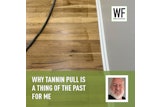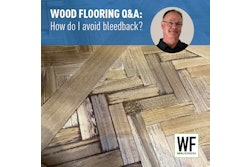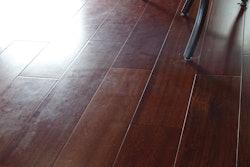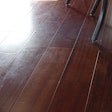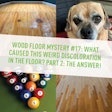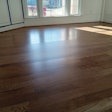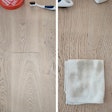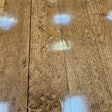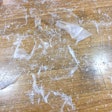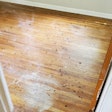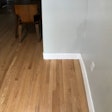Janka Fixation
I have customers doing Internet research and asking for certain species based on their Janka ratings. Will this really tell them how the floor will perform?
Tony Robison, general manager at Manassas, Va.-based Washington Wood Floors, answers:
Not a single salesperson or installer can tell a consumer what her floor will look like in six months. Do you know of any flooring product—not just wood flooring—that will not scratch? Or will not show damage from a pebble in a shoe or a damaged high heel?
As salespeople, we should tell the truth: Flooring materials scratch, and Janka hardness doesn’t have anything to do with whether a floor shows scratches or not. The better the maintenance and prevention, such as walkoff mats, the less these scratches show. The lower the gloss level, the less scratches show. Highly grained woods such as oak and ash hide scratches better than the tight-grained woods such as mahogany. These are the main facts that matter and will help consumers make the best choice for their lifestyle. Focusing on Janka hardness with the customer can lead them to have unrealistic expectations of the floor’s durability.
I believe that as installers, our main concern with Janka ratings should be how they affect cutting, acclimation and use of fasteners. When I talk with customers, the only time Janka hardness factors in is when they are looking for a floor that will show wear as part of their overall design; in that case, woods that dent more easily such as pine or fir are a good choice.
Scratch Repair
There is a big scratch in the factory-finished floor I installed in my customer’s new house. What’s the best way to repair it?
Tony Ziola, sales manager at Douliu City, Taiwan-based Ua Floors, answers:
How you repair the floor depends on how severe the scratch is. If the scratch is contained to only one or even a few boards, the best thing to do is repair those boards.
If the scratch is longer, though—say someone dragged something across the floor—the easiest way to repair it is to use one of the chemical adhesion systems that allow you to recoat the floor with a waterborne finish without having to screen it. I have always had success using those systems when every step of the directions is followed. That said, if you haven’t tested that system with that floor before, do a test and then let the finish cure (usually around seven days). Then try to scratch or peel the finish from the floor to make sure the adhesion is good. Oftentimes the customer doesn’t want to wait that long, but waiting seven days is better than rushing to do the repair and having the adhesion fail (which means you then have to resand the entire floor).
If you don’t want to use a chemical adhesion system, which is the preferred method, you can always simply screen and recoat the floor. If you do, make sure you clean the floor well first (use one of the cleaners that comes as a concentrate, not one you buy off the shelf), then screen and recoat the floor. But again, test for adhesion first.
If the floor was stained and the scratch has gone through the stain, that’s a bigger problem. This, too, depends on the extent of the scratches. Check with the manufacturer to see if they have a repair kit. If not, unless you’re an expert at matching stain, your best option may be to replace the scratched boards. When the floor has a lot of scratches, you may need to resand, restain and refinish the floor.
Any time you finish a factory-finished floor, check with the manufacturer to see if they have recommended recoating procedures and to learn if you are voiding the warranty.
Cement Board Subfloor?
My builder is insisting that I use cement board on a slab to nail down a ¾-inch solid strip floor. He says it has superior resistance to termites and provides noise control. Is this acceptable?
Glen Miller, assistant technical training director at the National Wood Flooring Association, answers:
Cement board is not a recommended subfloor for nailing down solid wood flooring. It is probably better suited than plywood to withstanding a termite attack, but as far as we know, cement board has no holding capacity for wood flooring fasteners.
There are several methods to install ¾-inch solid flooring over the concrete. Always check to make sure the existing concrete is dry. Then use a moisture retarder on top of the slab, even if the builder says a vapor retarder was installed under the slab. Installing either a plywood subfloor or a sleeper-type system is recommended. Or, depending on the flooring manufacturer, some solid flooring may even be glued directly to the slab. If the builder is concerned about noise control, then a sound-control underlayment must be used. And, if he still insists on using a cement board subfloor, the only appropriate wood floor is a floating floor.









